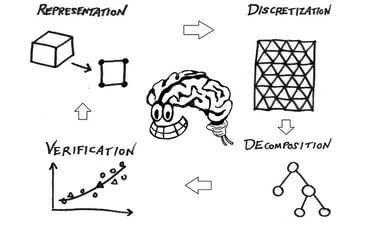9 weeks
3–5 hours per week
Instructor-paced
Instructor-led on a course schedule
Computational Thinking for Modeling and Simulation
At a glance
- Institution: MITx
- Subject: Computer Science
- Level: Intermediate
- Prerequisites:
- Algebra
- Calculus
- Language: English
- Video Transcript: English
- Associated skills:Computational Thinking, Algebra, Calculus, Forecasting, Discretization
Who can take this course?
Unfortunately, learners residing in one or more of the following countries or regions will not be able to register for this course: Iran, Cuba and the Crimea region of Ukraine. While edX has sought licenses from the U.S. Office of Foreign Assets Control (OFAC) to offer our courses to learners in these countries and regions, the licenses we have received are not broad enough to allow us to offer this course in all locations. edX truly regrets that U.S. sanctions prevent us from offering all of our courses to everyone, no matter where they live.Interested in this course for your business or team?
Train your employees in the most in-demand topics, with edX For Business.


